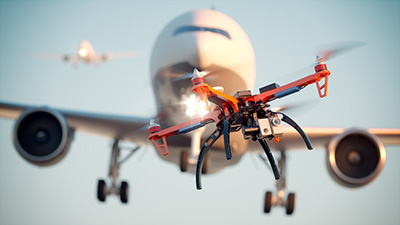When birds and airplanes compete for airspace, the birds typically lose the battle. But that doesn’t mean that bird strikes are harmless to aircraft and passengers. In the past, pilots only had two options: try to avoid the birds or strike them and hope for the best. Since aircraft maneuverability is limited, operators hope robotic herding and machine vision will be game-changers in keeping airspaces safe for both aircraft and the world’s feathered friends.
Robotic Herding and Machine Vision Protect Airspaces
 Airports have tried many approaches to keep birds out of the vicinity of aircraft. Some methods include gas cannons, pyrotechnics, dogs, and even paintball guns. But one new technology can help keep the birds safe, too: robotic herding.
Airports have tried many approaches to keep birds out of the vicinity of aircraft. Some methods include gas cannons, pyrotechnics, dogs, and even paintball guns. But one new technology can help keep the birds safe, too: robotic herding.
Scientists and engineers have developed a drone with an algorithm that can herd birds without human input. To accomplish this, they created a mathematical model of flocking dynamics to describe how flocks are formed, how birds respond to threats along the edge of the flock, and how they communicate those threats throughout the flock.
Using this information, they created a herding algorithm that maps flight paths for incoming drones to help move the flock away from protected airspace without dispersing or harming the birds in the flock. The drone uses machine vision to observe the behavior of the flock. The drone approaches, and the herding algorithm adjusts the drone’s movements to guide the flocks to safety.
Future of Robotic Herding
With the current robotic herding technology, two drones are deployed. One drone performs various maneuvers around the flocks as a pursuer while a surveillance drone hovers at a high altitude. The surveillance drone has a camera that points down and records the trajectories of the pursuer drone and the birds.
The current method has limited capabilities and falls short for herding larger flocks. Robotic herding has proven to be effective, but more study of flock behavior is needed. For now, the drones must be deployed by an operator. But designers hope to see the system for robotic herding become automated entirely eventually.
Some upgrades that will improve robotic herding are the use of machine vision to identify when birds are present, what type of birds, and the ability to deploy additional drones as needed. Networking and integrating drones could also help improve herding techniques, help report flock activity to the control tower, and project when aircraft airspace will be cleared.
